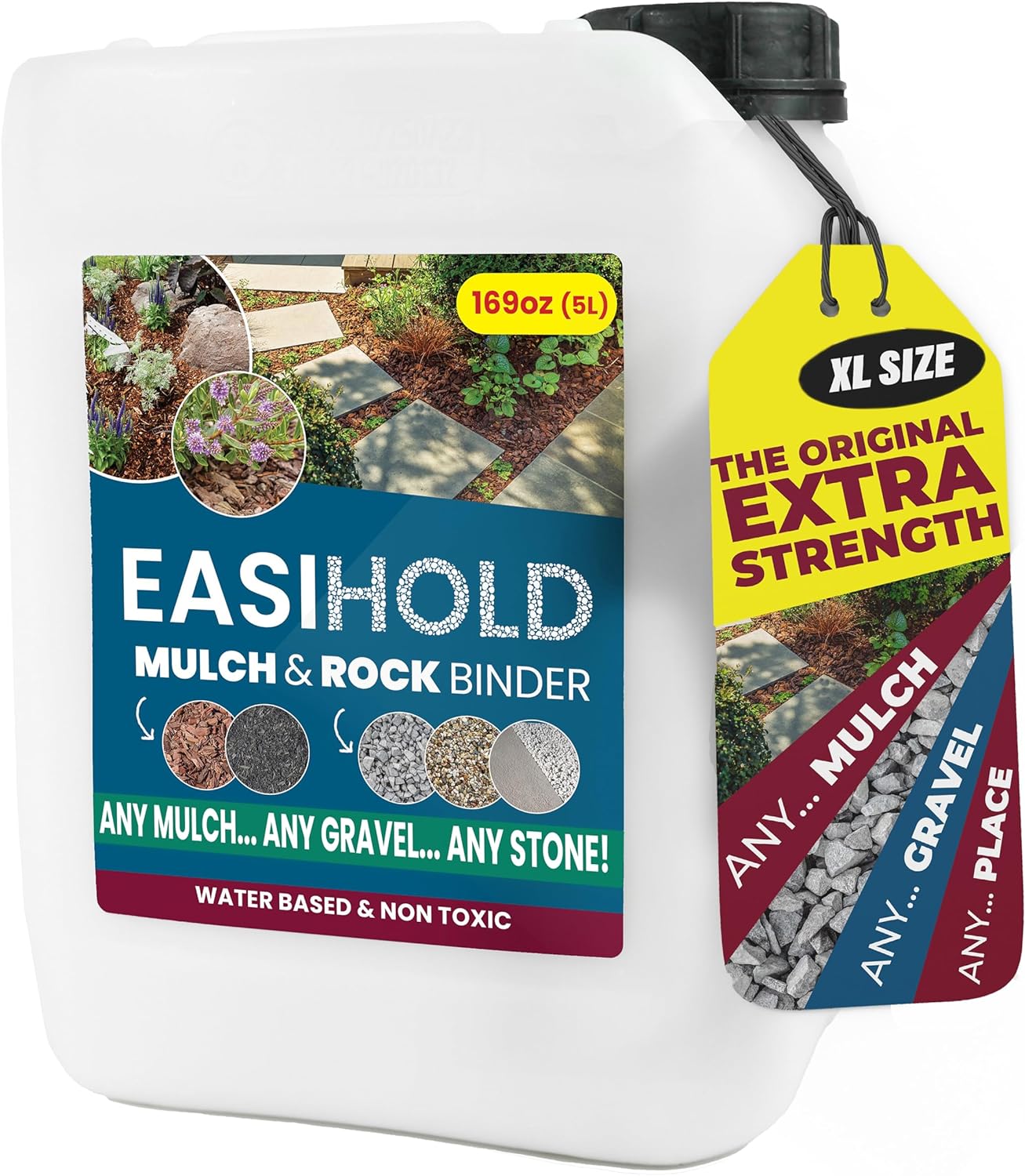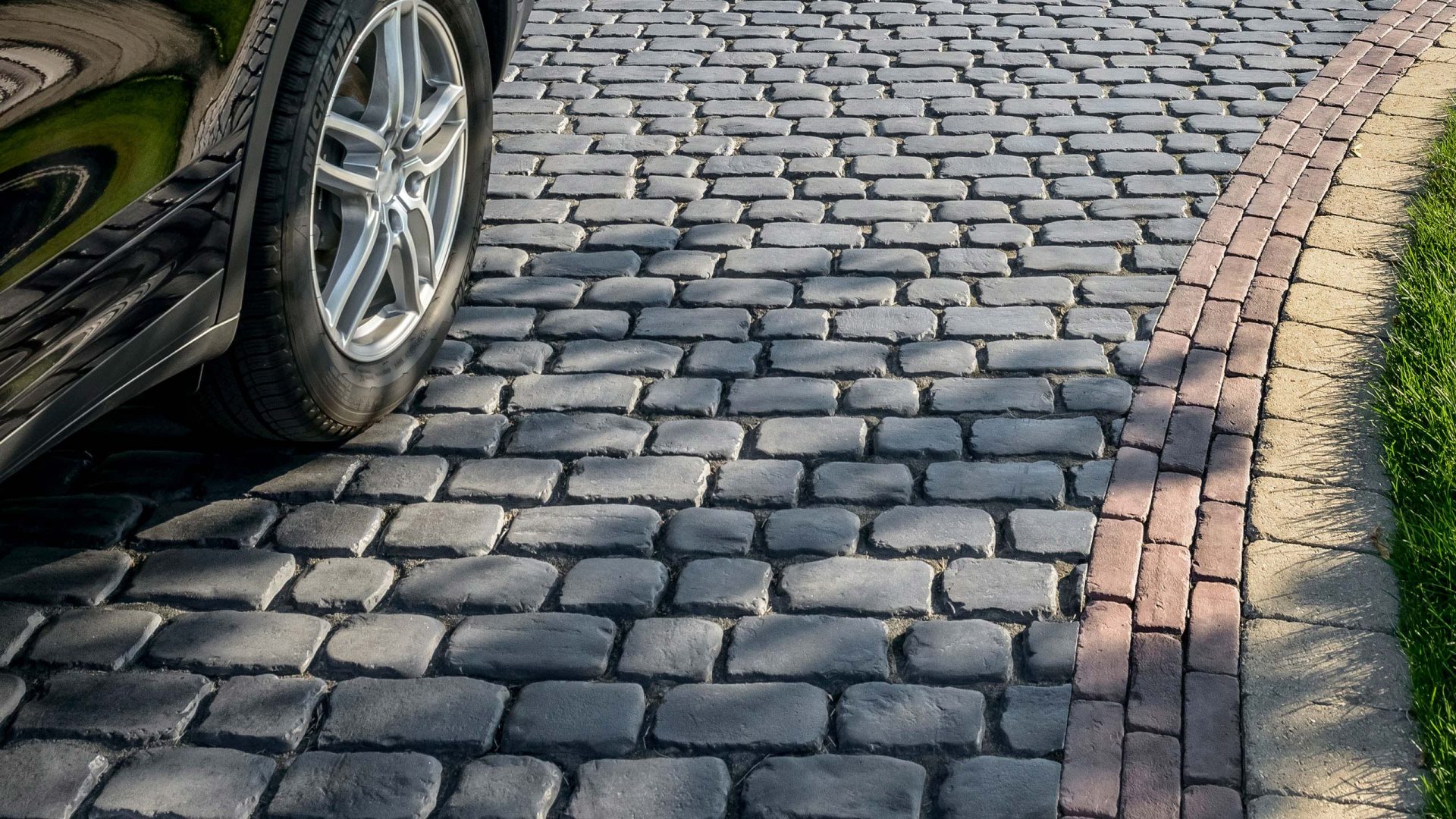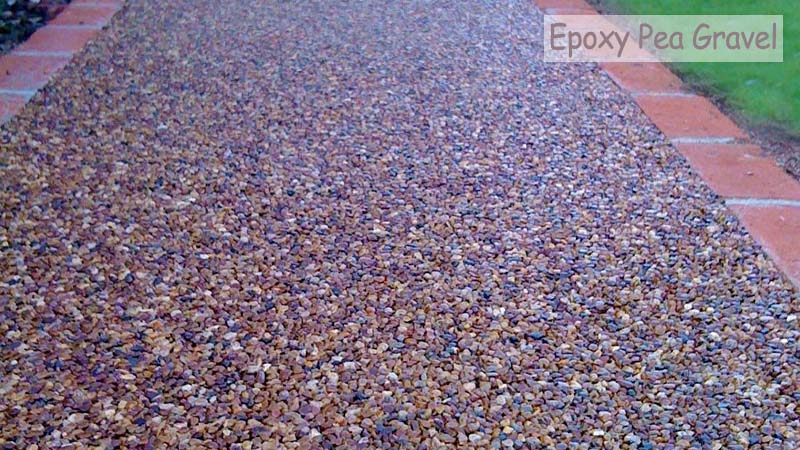Pea gravel is a small, smooth stone often used for drainage, gardening, landscaping, driveways, and outdoor construction. It is named pea gravel because of its relatively small size, similar to green peas.
The general sizing of pea gravel is about ¼ of an inch or less; however, it can range from a minimum diameter of 1/8 inches to 1.25 inches in diameter. Larger pea gravel is not considered standard and is used less often. This material comes in various tones and colors, including white, gray, red, and others that may even appear translucent.
Pea Gravel Costs
If you are looking to buy pea gravel and have a local supplier, you may be able to get them at a decent price. Most decorative pea gravel costs between $30 to $55 per ton; if you buy in bulk, you may get a better deal for 20 tons or more, depending on your supplier’s policies.
Cost Comparison:
| Patio Material | Average Cost per Square Foot |
|---|---|
| Pea Gravel | $1.50 – $3.50 |
| Concrete | $5 – $10 |
| Pavers | $10 – $20 |
| Natural Stone | $15 – $30 |
Why use Pea Gravel?
Pea gravel patios offer great functionality and flexibility. Contractors and homeowners love to use pea gravel for various outdoor functions; its uses are wide and varied. It is great for giving a natural organic feel to patios; it increases permeability and looks exceptionally good in walkways and landscaping.
They are cheap and easy to install and maintain but have a few drawbacks. Below, we will examine the pros and cons of building a pea gravel patio.
Check out some of these other hardscaping materials:

Pros and Benefits of a Pea Gravel Patio
1. Affordable
The cost of pea gravel compared to other patio materials makes it one of the best options for constructing patios if you are on a budget. For DIY enthusiasts, avoiding the high costs of professional labor and material per cubic yard is a driving force. You could easily create an entire patio from pea gravel from 1 ton of materials.
It is suitable if you are looking to do large-scale projects as bulk pricing will work in your favor making it a cheaper option than concrete pavers and easier to lay than flagstone, hence you could complete your patio job in just a day.
2. Low Maintenance and Easy to Repair
Unlike wooden decks that need cleaning and staining periodically, or other solid surface patio options such as pavers and concrete that crack and need to be repaired regularly, with pea gravel, you will not have to worry much about maintenance as it requires very low levels of maintenance after it is installed.
Pea gravel patios will certainly need to be maintained over time, and this is quite easy to do. The most common issues you would experience are unevenness and loss of rock density, which can be fixed by raking and pouring more pea gravel into the less dense areas. Maintaining is as affordable and accessible as the initial installation.
3. It is Permeable and Eco-Friendly
When you use other materials for landscaping, such as concrete or pavers, you must place them on a slight incline so that rainwater doesn’t accumulate on their surface to allow for better drainage and avoid flooding issues.
Because pea gravel patios are composed of unlocked components, they soak water into the stones, travel down through the patio’s surface, and soak into the ground instead of running over it. This prevents flooding and means no need for a slope to improve drainage and runoff.
4. Easy to Find and Widely Available
If you are looking to install a pea gravel patio, you can be almost sure to find it available through most retail suppliers. Even if you do not have a local supplier in your area, you can head to your nearest hardware store, and you will get the product sold by the bag.
You may also be able to shop for the product online through Amazon but you will only be able to purchase 5-40 pounds at a time due to logistics purposes, hence you can be able to build the perfect patio anywhere you live.
5. Has a Natural Look
One of the great things about pea gravel is that it can integrate seamlessly into any backyard. The stones give off a natural look that makes them seem like they have always been there.
Pea gravel looks and works great on pathways between garden boxes; it eliminates the need for mowing between the garden boxes.
6. Highly Customizable
There are many creative options available while using pea gravel. Due to its small size, you could mix it with other stones and gravel-like materials, giving it a beautiful landscaping look and feel.
7. Prevents Weed Growth
When the gravel is laid at least 4 inches thick from the ground, it naturally prevents weeds from growing on your patio. Laying the gravel thick is advantageous to ensure it is mess-free and will not become muddy when it rains. This also helps to keep pests away from your property.
8. Easy to Install
Pea gravel patios can be installed in a few days, depending on the size. It is quite easy to install as you only need a few hand tools, a wheelbarrow, and a few helping hands.
Prepare the ground. Dig down at least 3 inches, creating a flat bottom to the hole. To prevent small stones from scattering, install pavers to block them from dispersing to the surrounding lawn.
Pea gravel does not require perfectly leveled ground; it will level itself on the surface over time, which means less work.
You may cover the landscape with fabric to prevent weed growth, but this could also be achieved by laying the gravel 4 inches thick from the ground.
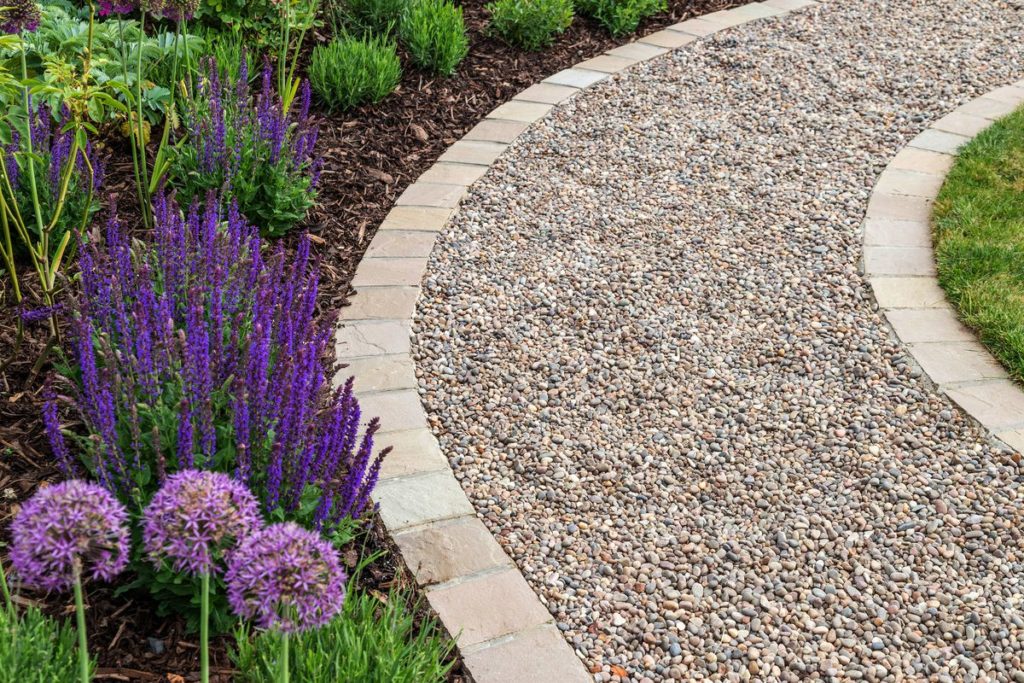
Cons of a Pea Gravel Patio
Pea gravel is great, but it has its downsides. If you like a natural look and feel, the drawbacks will not deter you from installing one.
1. Can be Easily Displaced
You must create an edge barrier for a pea gravel patio to work well. Even when precautions are taken, the gravel will spread easily, and if there is no barrier, the pea gravel will find its way off your patio and disperse to the surrounding lawn. Epoxy Pea Gravel Patio can be the solution to reducing displacement.
NO MORE LOOSE ROCKS: Easihold, the original gravel glue, is designed to hold together your pea gravel, rocks, pebbles, and mulch securely. It is environmentally friendly and will not harm your pet or child should they come in contact with the treated pea gravel or rocks.
With heavy foot traffic on a pea gravel patio, the patio can become dented and uneven after some time, with some pea gravel shifting from its intended area. The unevenness can give an awkward look, impeding the patio’s aesthetic look and feel.
Having an uneven patio will be problematic when trying to level furniture. This may not be such a big issue as it is affordable to add more gravel when needed or may need to be racked back into place.
2. Damaging to Furniture
It cannot provide a firm, solid base for furniture; you might have to bury the legs a little to get the patio chairs to rest securely. Pea gravel patios do not work well with the furniture as the weight of the furniture causes it to sink, even when you have set up a firm foundation to place the furniture.
You may need to add more layers, a minimum of 6 inches, and fix a base rock underneath to prevent it from shifting before the surface can become ready to use as an outdoor dining area.
Failing to take precautions like adding layers and fixing the base rock underneath will risk damaging your furniture in the future.
3. Uncomfortable walking on
If you enjoy walking barefoot in your backyard, pea gravel could cause problems, as walking barefoot can be quite uncomfortable. Most pea gravel stones are smooth to avoid being dangerous and pointy.
However, they are still rocks, making them more uncomfortable to stand on than on a completely flat surface. This is a non-issue for people not into ‘earthing’ walking barefoot.
4. Weed Growth can still happen
Even tightly packed pea gravel will not prevent all weeds from growing. Some may view this as a benefit of a pea gravel patio because they can use the gravel to line along with trees and garden beds.
If you do not use a quality landscaping fabric, you will have unwanted seeds germinating. The landscaping fabric blocks the sunlight from germinating seeds in the soil underneath; however, if the rocks you install have any organic elements, unwanted seeds can still germinate within a couple of months. The weeds tend to be easy to pull out since their roots are at the base of the rock layer.
5. Maintenance
We have considered this a pro, but the pea gravel is not entirely maintenance-free. Using a leaf blower, you must keep debris off the source and occasionally rake the stones to level them out.
6. Complicated Snow Removal
Snow removal on pea gravel can become tiresome as shoveling over a surface of loose rocks is not easy and may, in turn, make your patio loose shape and uneven. You will need to use a shovel for thicker snow to remove the top layer until you get a thin surface right before the pebbles, then you will use some salt to melt the ice or a leaf blower to remove the rest of the surface.
7. Messy
Pea gravel can become a muddy mess in the rain and get all over the place if not maintained to prevent it from shifting from its intended place. You will have to keep raking the gravel back regularly, and a base layer of rock has to be fixed underneath to prevent the gravel from shifting.
To prevent an unnecessary mess, take your time tamping the pea gravel down and installing a barrier around the outside border of the gravel patio. You would also need to discourage your pets and children from digging too much in the patio area; a good idea would be to create a separate pea gravel “sandbox” where the children and the pets can play without being limited.
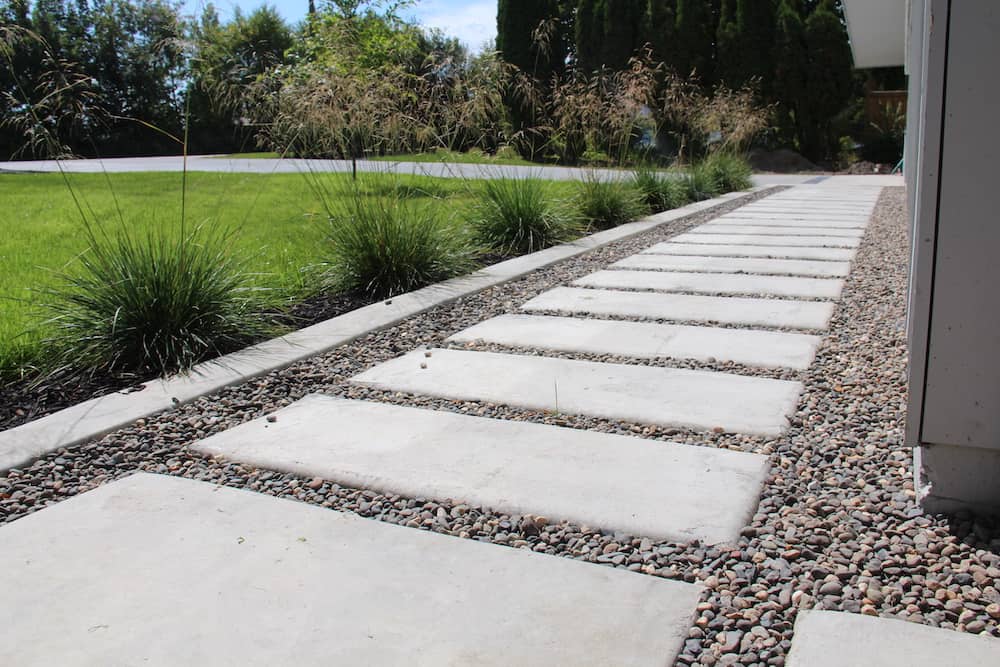
It is essential to consider the pros and cons of a pea gravel patio when looking for an affordable and quick way to upgrade your property. Pea gravel’s flexibility and endless functionality can turn an unused space into something beautiful and dynamic.
To enjoy this type of setting, take a closer look at all the cons and simple hacks you can use to solve those issues. You may need to invest more in the refreshment of stones to replace patches that may show up over time due to daily use and runoffs. Considering all these, you will discover that pea gravel’s visual aesthetic is worth the investment.
Patio FAQs
What does a patio mean?
A patio is an outdoor area adjacent to a house, usually surfaced with concrete or paving, used for dining or recreational purposes. Its origins trace back to the Spanish term “courtyard,” derived from the Latin word “pati,” meaning “to open up.”
What is the difference between a patio and a porch?
A patio, typically at ground level, comprises paved or concrete surfaces, often utilized for dining or recreation, and may or may not have a roof. In contrast, a porch is a covered area attached to a house, constructed from wood or stone, serving as a space to relax or transition indoors and outdoors. Porches are usually located at the front of a house, whereas patios are commonly situated in the backyard or side areas.
What is the most affordable patio?
The affordability of a patio hinges on various factors, including material choices and space dimensions. Opting for materials like concrete, gravel, or treated wood tends to be more economical than pricier alternatives such as brick or natural stone. Keeping the patio size modest also aids in cost reduction. Comparing prices and exploring different material and labor options can help find budget-friendly solutions.
You may also like:

John Brown
John Brown brings a wealth of experience and passion for DIY, Home and Garden, and Woodworking. With a dedication to empowering enthusiasts, he shares insights, tips, and comprehensive guides to help you transform spaces and master woodworking skills.

